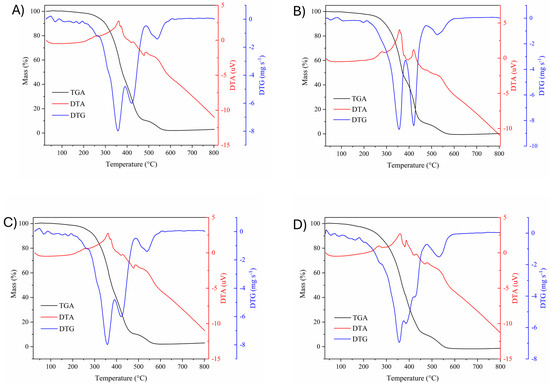Millions of years of isolation have given Madagascar a unique flora that still reflects some of its relationship with the continents of Africa and India. Here, the complete chloroplast sequence of
Beilschmiedia moratii, a tropical tree in Madagascar, was determined. The plastome,
[...] Read more.
Millions of years of isolation have given Madagascar a unique flora that still reflects some of its relationship with the continents of Africa and India. Here, the complete chloroplast sequence of
Beilschmiedia moratii, a tropical tree in Madagascar, was determined. The plastome, with a length of 158,410 bp, was 143 bp and 187 bp smaller than those of two closely related species,
B. pierreana and
Potameia microphylla, in sub-Saharan Africa and Madagascar with published sequences, respectively. A total of 124 repeats and 114 simple sequence repeats (SSRs) were detected in the plastome of
B. moratii. Six highly variable regions, including
ndhF,
ndhF-rpl32,
trnC-petN,
pebE-petL,
rpl32-trnL, and
ycf1, among the three African species were identified and 1151 mutation events, including 14 SVs, 351 indels, and 786 substitutions, were accurately located. There were 634 mutation events between
B. moratii and
P. microphylla with a mean nucleotide variability (π) value of 0.00279, while there were 827 mutation events between
B. moratii and
B. pierreana with a mean π value of 0.00385. The Ka/Ks ratios of 86 protein-coding genes in the three African species were less than 1, and the mean value between
B. moratii and
P. microphylla was 0.184, while the mean value between
B. moratii and
B. pierreana was 0.286. In this study, the plastid genomes of the three African Beilschmiediineae species were compared for the first time and revealed that
B. moratii and
P. microphylla from Madagascar were relatively conserved, with low mutation rates and slower evolutionary rates.
Full article
 IJMS
IMPACT
IJMS
IMPACT Applied Sciences
IMPACT
Applied Sciences
IMPACT Sustainability
IMPACT
Sustainability
IMPACT Sensors
IMPACT
Sensors
IMPACT JCM
IMPACT
JCM
IMPACT Materials
IMPACT
Materials
IMPACT Molecules
IMPACT
Molecules
IMPACT Energies
IMPACT
Energies
IMPACT Electronics
IMPACT
Electronics
IMPACT Remote Sensing
IMPACT
Remote Sensing
IMPACT Cancers
IMPACT
Cancers
IMPACT Nutrients
IMPACT
Nutrients
IMPACT Mathematics
IMPACT
Mathematics
IMPACT Foods
IMPACT
Foods
IMPACT Buildings
IMPACT
Buildings
IMPACT Polymers
IMPACT
Polymers
IMPACT Animals
IMPACT
Animals
IMPACT Water
IMPACT
Water
IMPACT Plants
IMPACT
Plants
IMPACT Agronomy
IMPACT
Agronomy
IMPACT Biomedicines
IMPACT
Biomedicines
IMPACT Processes
IMPACT
Processes
IMPACT Microorganisms
IMPACT
Microorganisms
IMPACT Diagnostics
IMPACT
Diagnostics
IMPACT Nanomaterials
IMPACT
Nanomaterials
IMPACT Viruses
IMPACT
Viruses
IMPACT Medicina
IMPACT
Medicina
IMPACT Healthcare
IMPACT
Healthcare
IMPACT Cells
IMPACT
Cells
IMPACT Forests
IMPACT
Forests
IMPACT Agriculture
IMPACT
Agriculture
IMPACT Land
IMPACT
Land
IMPACT JMSE
IMPACT
JMSE
IMPACT IJERPH
IJERPH
 Symmetry
IMPACT
Symmetry
IMPACT Genes
IMPACT
Genes
IMPACT Pharmaceutics
IMPACT
Pharmaceutics
IMPACT Coatings
IMPACT
Coatings
IMPACT Micromachines
IMPACT
Micromachines
IMPACT Pharmaceuticals
IMPACT
Pharmaceuticals
IMPACT Atmosphere
IMPACT
Atmosphere
IMPACT Children
IMPACT
Children
IMPACT Religions
IMPACT
Religions
IMPACT Antioxidants
IMPACT
Antioxidants
IMPACT Life
IMPACT
Life
IMPACT Metals
IMPACT
Metals
IMPACT Biomolecules
IMPACT
Biomolecules
IMPACT Vaccines
IMPACT
Vaccines
IMPACT Education Sciences
IMPACT
Education Sciences
IMPACT Minerals
IMPACT
Minerals
IMPACT Horticulturae
IMPACT
Horticulturae
IMPACT Brain Sciences
IMPACT
Brain Sciences
IMPACT JPM
IMPACT
JPM
IMPACT Bioengineering
IMPACT
Bioengineering
IMPACT




























